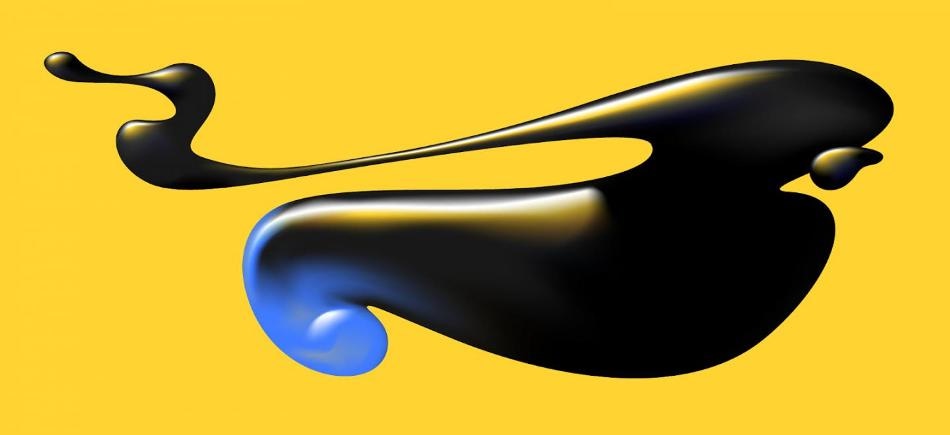Jun 24 2019
A research team, from Moscow Institute of Physics and Technology (MIPT), Lomonosov Moscow State University, Skoltech, and the Joint Institute for High Temperatures of the Russian Academy of Sciences, has proposed a new method for analyzing oil composition.
 Illustration. Oil dissolved in water. (Image credit: @tsarcyanide/MIPT Press Office)
Illustration. Oil dissolved in water. (Image credit: @tsarcyanide/MIPT Press Office)
Using high pressure and temperature, the researchers initially dissolved oil in water and then examined its composition. The novel technique conforms to the principle of green chemistry since it makes it viable to eliminate the use of environmentally dangerous solvents. The paper has been reported in the Analytical and Bioanalytical Chemistry journal.
Crude oil, in its raw form, is almost never used. However, it is important to know its exact composition so that refining can be made as efficient as possible. Moreover, crude oil contains more than 100,000 compounds, with the precise composition of the sample differing based on the field it was obtained at. By nature, crude oil is extremely complex, making it unfeasible to isolate into separate compounds.
At 300 °C, heavier fractions are nonvolatile and still they need to be properly analyzed. They are mostly known to contain carboxylic acids, dibenzofurans¸ quinolines, pyridines, carbazoles, ketones, and phenols.
Apart from that, sulfuric compounds may also be present in crude oil extracted from certain fields. Several hydrocarbons possess identical formulas, with the same number of oxygen, carbon, and hydrogen atoms, but they vary in their arrangements, that is, they are isomers.
The highly different structures clearly display different chemical characteristics. Many atoms are present in heavier hydrocarbons, implying that each compound has more structural variability.
Although mass spectrometry offers data on the substances’ elemental composition as well as their molecular mass, they usually cannot differentiate between different isomers. As such, isotope exchange analysis would be able to provide such information. This technique is predicated on the fact that, based on the type of specific compounds that constitute crude oil or some other type of sample, atoms of hydrogen and oxygen will take more or less time to be substituted with their isotopes—principally the same types of elements, but with a varied mass.
The cleanest and the most readily available source of isotopes is water; however, oil is not soluble in water under standard conditions, thus necessitating the use of powerful alkali and acids instead. Conversely, acids are likely to break down organic compounds, particularly at high temperatures, thereby changing the composition of the sample.
However, it is known that compounds that are insoluble in water can possibly be dissolved in supercritical, or superheated, water at temperatures that are considerably higher than 100 °C. As a result, a decision was made to apply this technique to crude oil.
The scientists demonstrated that a water-based crude oil solution could be achieved by raising the pressure and temperature and examining its composition. The sample was heated to a temperature of 360 °C in heavy water (wherein deuterium replaces the hydrogen) at pressures higher than 300 atm for a period of 1 hour.
Post the isotope exchange reaction, mass spectra of the original sample were compared with that of the sample, and the data obtained helped in gaining additional information on the structure of the compounds containing crude oil. In addition, this technique could be used for analyzing other complex nonpolar compounds at the molecular level.
“Isotope labels may only be incorporated at specific positions in the molecule, similar to the lock-and-key model,” stated Eugene Nikolaev, Professor of Skoltech and MIPT, who also heads the Laboratory of Mass Spectrometry at Skoltech. “We can analyze molecular structure by using high-resolution mass spectrometry to measure the exchange rate even when it is impossible to separate individual compounds and identify their structure with other methods.”
Light crude oil reserves are depleting. Hydrocracking of fuel oil, which is characterized by its highly complex and poorly studied molecular structure, is playing an ever greater role in gasoline production. Hydrocrackers are expensive, they are not produced in Russia, and they require the use of special catalysts.
Yury Kostyukevich, Study Co-Author and Senior Researcher, Skoltech and MIPT Laboratories
Kostyukevich continued, "We have found a way to identify furans, pyridines, and naphthenic acids in crude oil without having to resort to the complex distillation process. We hope our research will help better understand crude oil structure and composition, contribute to the development of new catalysts for more efficient oil refining, and enable improved oil quality monitoring in trunk pipeline systems."